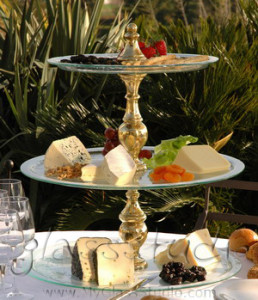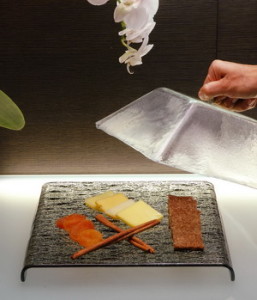The Glass Co Blog
Cheese platter ideas
Cheese platters have become one of the favorite types of dining amusement, providing both tasting delight and a form of entertainment at the dinner table. Composed with the aim to awaken taste buds of cheese connoisseurs and culinary adventurers, cheese platters can be included in almost any dining setting and occasion, from pre-dinner hord’d’oeuvres and appetizer courses to becoming main dining course for private parties or a post-dinner treat.
Although essentially based on a simple idea of serving a variety of cheeses for sampling the pallet of cheese tastes, there are several golden rules and tips to remember when assembling a cheese platter. One of the first rules is to serve 3-6 types of cheese varying in size, texture, color and aroma, while following the common pattern that unites them on the plate. This could be the type of milk used for their production or region of origin. The goal is to keep the plate interesting and to surprise with unexpected flavors.
When creating a cheese platter it is important to remember to provide a good variety of fruits, wines, snacks and condiments to accompany the cheese tasting experience. Grapes, apples,dried fruits, nuts, olives, tomatoes and crostinins are some of the most common complimentary choices. But if you want to surprise your guests with new pairings of tastes, try serving honey or aromatic spreads to intensify the distinctive flavors of cheeses.
One of the most important things to consider is the surface used for assembling cheese collection. Although wooden platters and marble or stone boards are commonly used for cheese presentation, we suggest glass cheese platters and trays for a more dazzling effect. Glass platter and trays provide neutral background to cheese serving composition and do not take attention away from the texture and colors of cheeses. Furthermore, as a material, glass prevents development of bacteria. Glass cheese platters and trays can help your cheese composition endure freshness for hours after serving.
Finally, when preparing cheese platters remember to leave enough pace between cheeses to prevent unintentional mix of flavors and aromas. Use large platters and trays with sufficient space for each cheese to “breathe”, or place each cheese type on a separate plate or tray and let tasting of each plate be a special moment for itself. Serve complementary fruits and baked goods alongside cheeses on a cheese platter, but keep condiments and spreads in separate bowls and dishes to prevent uniformity of tastes.
Be creative with your cheese platter and spark a conversation with your guests about their favorite cheese types. Have fun!



